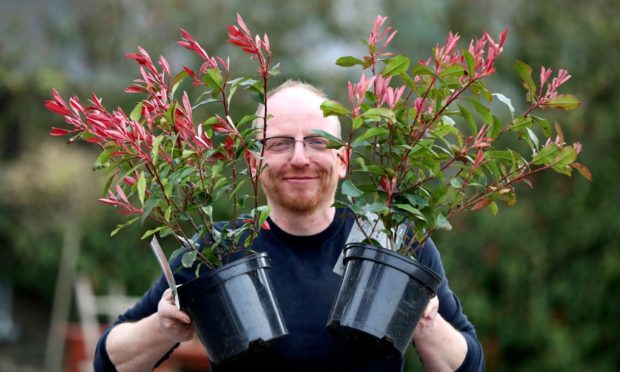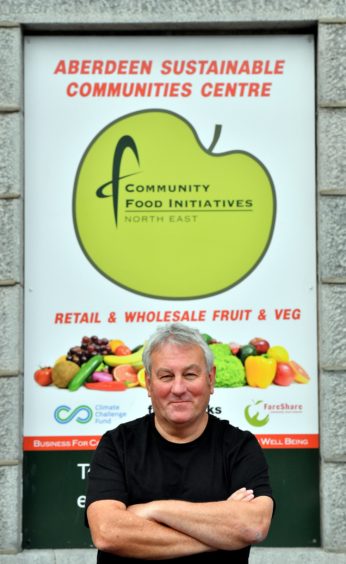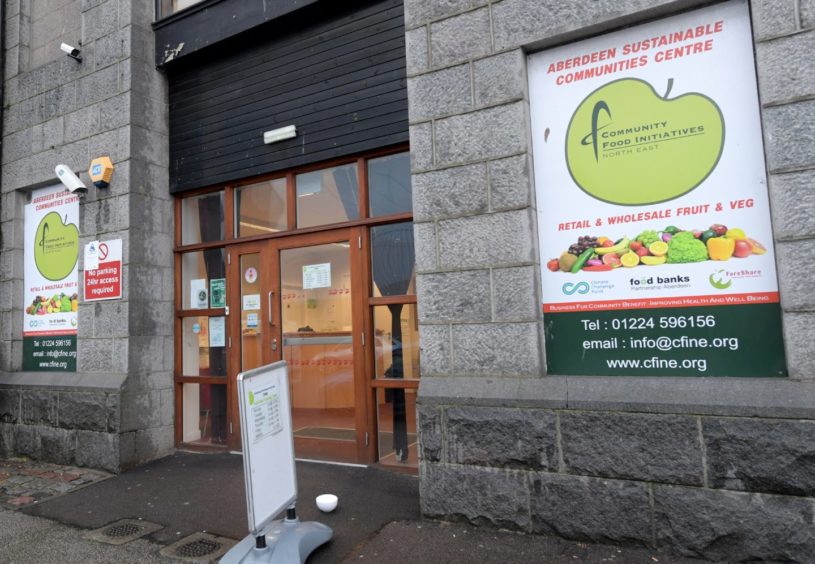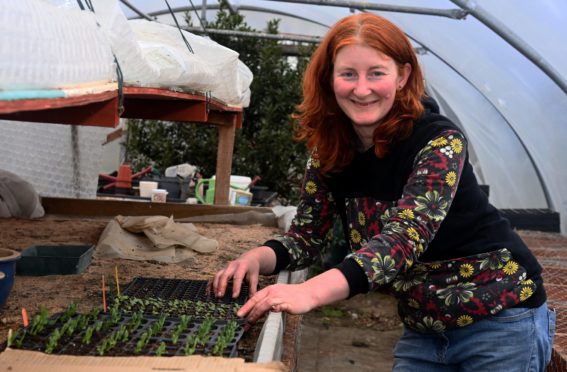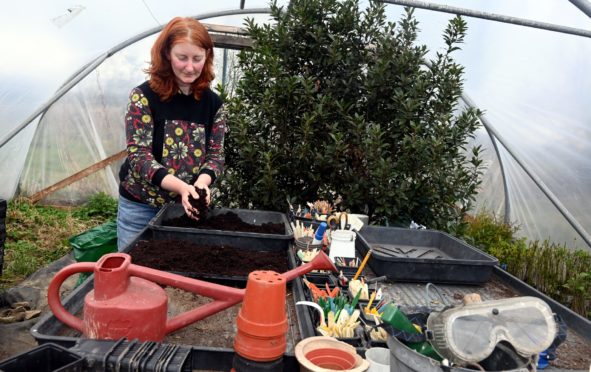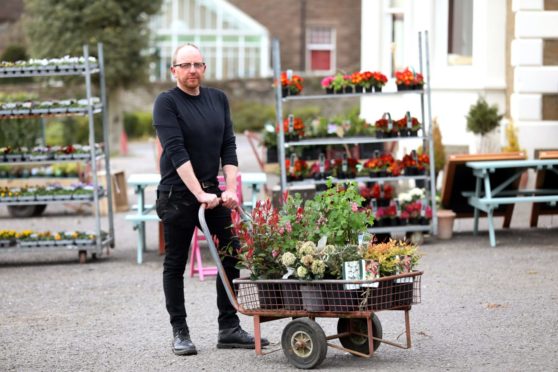Harvesting of homegrown fruit, vegetables and herbs has surged in popularity over the past 12 months.
With people being largely confined to their homes since March 2020, documenting the growth of seedlings and watering pots became a ritual to many.
Many discovered that you don’t need to be an expert in the field to grow your own produce – or even have a garden for that matter. All that’s required is some basic equipment, seeds or seedlings, compost, pots and, of course, patience.
Whether it became a new interest or hobby over the course of the pandemic or has always been a passion, growing your own foods at home is something anyone can enjoy.
It also has a number of benefits too, including reducing stress, improving mental health and encouraging you to adhere to a better diet, as well as saving money.
And despite us now being well into spring, there’s still time to start the growing process – you can choose to plant anything from tomatoes, herbs, strawberries, carrots, runner beans and much more.
Keep Growing
Dave Kilgour, development work manager at Community Food Initiatives North East (CFINE) is passionate about promoting the benefits of homegrown produce, so much so that he played a role in the launch of an exciting project in 2020, known as Keep Growing Aberdeen.
The project, introduced last year in response to the pandemic, aimed to help people get involved with and start their own community and vegetable gardens.
It is now in its second year and CFINE, in partnership with One Seed Forward, Tullos Community Garden, Aberdeen City Council, and Aberdeen City Health and Social Care Partnership, has distributed more than 400 growing packs this time around.
The packs contain 12 litres of compost, three or four packets of vegetable, herb and flower seeds, pots, seedling trays and growing instructions so residents can start their own vegetable gardens.
Participants are encouraged to share surplus seedlings with their neighbours, share their experiences and address any growing-related questions on the Keep Growing Aberdeen Facebook group or via other communication methods.
Dave is thrilled by the success of the second event. He said: “Keep Growing Aberdeen was very successful in 2020. With our partners, we distributed a total of 264 seedlings to households across Aberdeen.
Food growing is a useful life skill that participants can benefit from for years and years.
Dave Kilgour, CFINE
“In 2021, we almost doubled this number and provided 415 kits for the community. We have really enjoyed helping people start to grow their own edible plants at home and connect with like-minded people online.
“The people who received growing kits last year as part of Keep Growing Aberdeen 2020 have indicated a variety of benefits that they experienced.
“Contact with nature is proven to improve mental health, which makes food growing a great remedy for the feeling of confinement caused by Covid-19.
“Furthermore, food growing is a fun free time activity that encourages community participation, pro-environmental behaviours and can potentially improve people’s dietary habits.
“Additionally, food growing is a useful life skill that participants can benefit from for years and years.”
The barriers
“The biggest barrier is the weather,” Caroline Mckinlay said. “It really puts people off.”
Caroline, the director of Bridgend Garden Centre in Freuchie, has been growing her own produce for more than a decade. She loves having the freedom to decide what she wants to grow and when she wants to grow it.
“Being able to just go out in the garden and pick vegetables when you need them is great,” she added.
“Potatoes are the easiest to grow. You just can’t beat the flavour of homegrown potatoes – and any vegetable in general really.
“I think it’s great for other reasons too. It allows you to get outside in the fresh air rather than being stuck indoors on a computer all day. It’s great for people’s mental health.”
It’s a learning process
Meanwhile, Anna Wilson of Huntly Herbs, based at Gartly in Aberdeenshire, believes that space is definitely an obstacle.
The business, renowned for its award-winning organic jams, chutneys and jellies, grows as many of the ingredients in its preserves as possible, including blackcurrants, brambles, redcurrants, gooseberries, strawberries, rhubarb, courgettes, pumpkins, tomatoes and a selection of herbs.
Anna’s passion for home harvesting is one that she can link back to her childhood. She said: “My parents always grew fruit and vegetables so I have been harvesting for as long as I can remember.
“I remember picking raspberries with my mum when I was just about big enough to hold a bucket and my brother was too little to help, but big enough to eat what we picked.
“Space is definitely one obstacle, but you can start small – with something like a pot of herbs on the windowsill, or a window box of salad leaves.
“There’s so much information out there about growing your own that I think it can seem a bit overwhelming to a beginner, it’s hard to know where to start.
“But it’s all part of a learning process, so as soon as you put your first seed in the ground you are on your way, you don’t have to aim for perfection, and certainly not from the beginning.
“In fact, learning from your mistakes, or improving your techniques each year is where some of the satisfaction of home growing comes from.”
“You won’t find a better flavour”
Anna believes the benefits of growing your own produce outweigh the drawbacks significantly, and that more people began to realise this over the course of the pandemic.
“I love two things about it – the satisfaction of having produced something yourself and the flavour. It’s not instant gratification because you have to wait for the crop to grow, but that makes the result feel even better,” she continues.
“As for the benefits, definitely flavour first. You really can’t buy anything as fresh as it is when you grow your own and for crops like salads, strawberries and sweetcorn you can really taste the difference when it’s eaten straight away.
“You really won’t find a better flavour than something freshly picked from the garden. Money can’t buy that.
I love two things about it – the satisfaction of having produced something yourself and the flavour.
Anna Wilson, Huntly Herbs
“Secondly, you know exactly what’s gone into the crop in terms of fertiliser, pesticides etc. It gives you an appreciation of the value of food, so you understand what efforts go into bringing a punnet of fruit or cabbage to a supermarket shelf.
“Thirdly, you can grow unusual varieties of fruit and vegetables that aren’t available in shops because they’re uneconomic to grow on a large scale. Old varieties of tatties or tomatoes for example, which may have lower yields than modern varieties, but better flavour.
“At the very beginning of lockdown, there was a degree of uncertainty about food supplies, and shops had bare shelves for a few weeks, so that may have had something to do with the surge in people growing their own foods.
“I think more of a factor may have been that people who had been wanting to try growing their own for years suddenly found themselves with lots of time at home.
“In lockdown, it felt like half the world was working longer hours than ever before, and the other half was at home with time on their hands.”
For those just starting out, she recommends growing in containers rather than the ground. “The one thing to remember with containers is that you have to keep things watered,” Anna said.
“Some of the quickest and easiest things to start with are salad leaves, rocket, radish, etc because you can sow them directly into the ground. They germinate quickly and you can be eating your first harvest within weeks.
“Tatties are also good to start with because although it takes longer to get to the harvesting stage, they’re easy to grow.”
Start simple
Other than potatoes, Ross Turriff, co-owner of Jessie’s Kitchen in Broughty Ferry, says those new to the home harvesting game should opt for young vegetable plants.
“To get started with something easy, then go for tatties – couldn’t be simpler,” he added. “Get a decent-sized bucket, some soil and some seed potatoes and they will grow.
“Also, possibly consider buying young vegetable plants from a place like Jessie’s Kitchen at first, rather than trying to bring things on from seed.”
Jessie’s Kitchen is a family-run cafe with a garden centre and farm shop on site. It offers breakfast, lunch, afternoon teas, home bakes, and teas and coffees.
Ross, who has a background in fresh produce and plant sales, said: “My grandfather started a plant nursery and opened fruit and vegetable shops in Dundee in the 1960s.
“I worked in the business from a young age. In the early 2000s, we opened our farm shop at the nursery/garden centre, then in 2011, we added Jessie’s Kitchen.
Home growing is easy and rewarding, requiring very little start-up costs and less space required than you may think.
Ross Turriff, Jessie’s Kitchen
“The idea was to combine our lovely setting and love of cafe culture with the abundance of fresh local produce we were able to get our hands on, some grown on-site, to provide an exciting menu in a vibrant environment. And 10 years later, we’re still doing that.
“For instance, this week’s scone of the week is rhubarb crumble because we were able to get the first few stalks of our own rhubarb at the weekend.
“That freshly picked rhubarb made the 20-metre trip from the garden to the oven, to the cafe table for our customers.
“Our menus are planned around seasonality. I’ve been in the produce industry since the 80s so have a good idea of when and where the good stuff is – including our own stuff.
“The real beauty of growing your own produce and using produce from local suppliers is definitely, first and foremost, the taste – always the taste.
“Something grown on-site, popped straight into the kitchen, then out on a plate to a customer is always going to taste better.
“There’s also the ability to grow things that you maybe don’t see everywhere or can struggle to find. Lovage for example – when did you last stumble across that? We’ve currently got loads of it.
“I hope people aren’t too put off by thinking there’s a lot of skill involved in growing your own and that they need to learn a lot before the start.
“Also, there’s the typical gardener’s advice – if you ask three different experienced gardeners for advice you are guaranteed to get three totally different answers.
“Home growing is easy and rewarding, requiring very little start-up costs and less space required than you may think – give it a go.”
